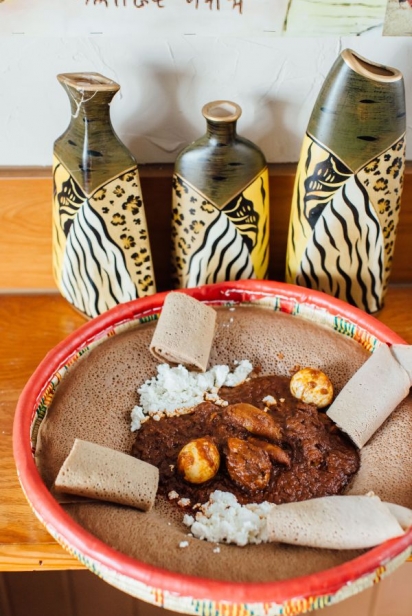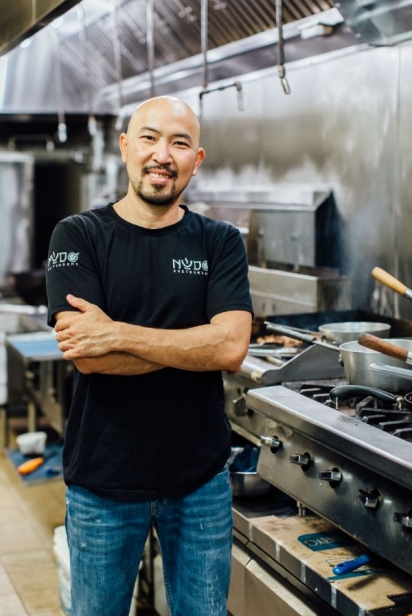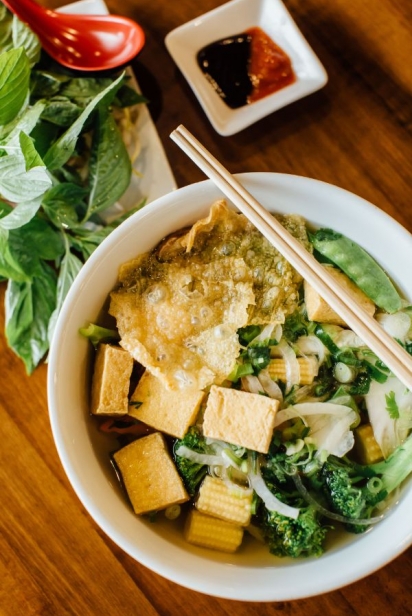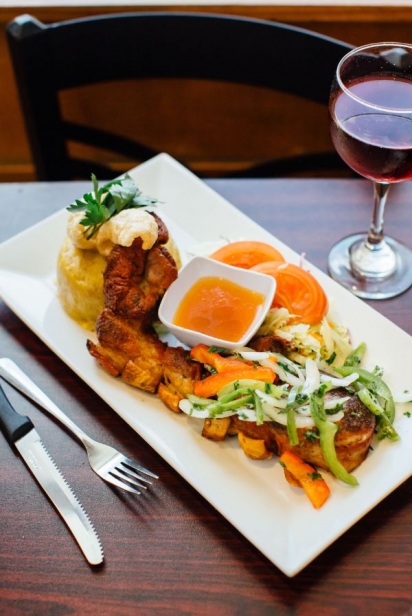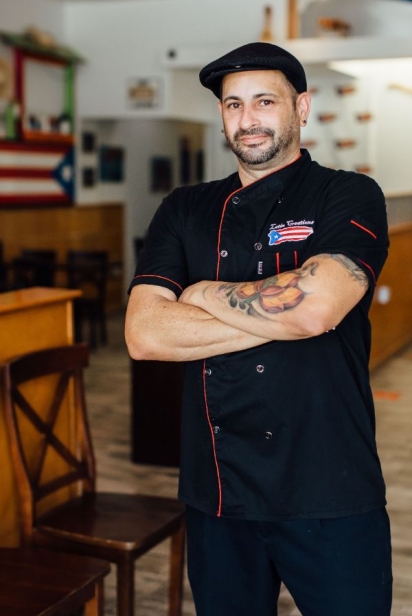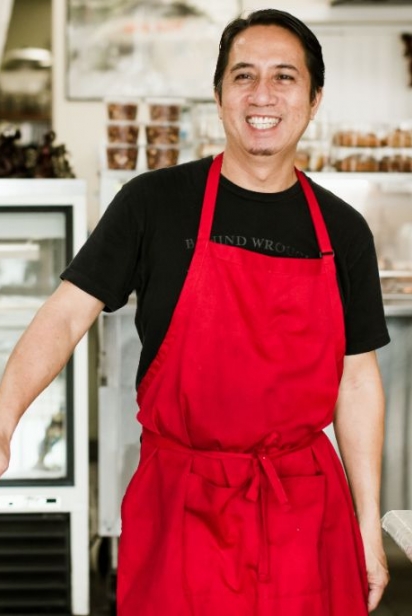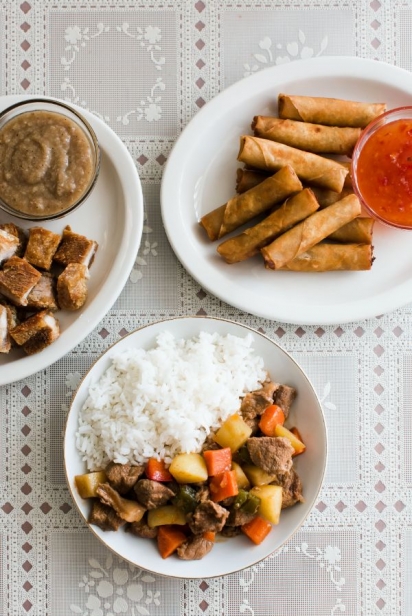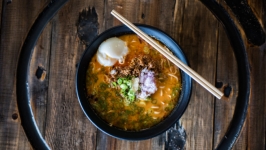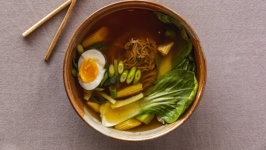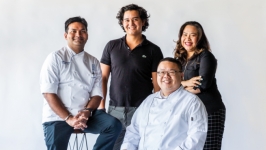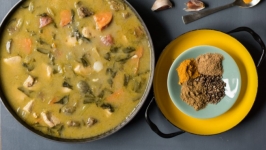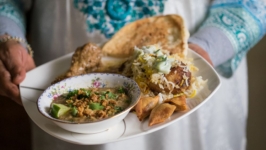An International Walkabout at Five Jacksonville Restaurants
The senses can travel, even when we may not be venturing too far from our home base. Given the global culinary delights in Northeast Florida, it is quite easy for our taste buds and sense of smell to explore, to venture a bit off the tried and true and discover dining adventures. For those with a wandering palate, our region offers diverse spices and seasonings at local restaurants. Fresh, new options and long-standing traditions mingle vibrantly as the creative chefs of Northeast Florida showcase why they are the keepers of authenticity.
EVERYDAY HOLIDAY IN ETHIOPIA
There is something celebratory about a large dish arriving at a table and inviting all seated around it to dig in…with their hands. That is the essence of Ethiopian cuisine. When you dive into an Ethiopian dish, there is no mistaking where the dish came from. You will most likely find the Ethiopian spice mixture known as berbere in dishes such as wat, a thick stew of spicy meats and vegetables. Served with injera, a fermented sourdough flatbread, this meal is truly a culinary voyage to Ethiopia.
Michael Mideksa works for his sister, Hiwot Mideksa, owner of Nile Ethiopian Restaurant in Jacksonville. Michael’s face lights up when he speaks about the food. “You must try the Kifto (ground beef, spices, butter),” he says. “This is the best African dish,” he adds, pointing at the Doro Wat, a flavorful chicken dish typically served to be shared with family and friends.
Every meal culminates with the coffee ceremony, an integral part of the experience. Widely accepted as the birthplace of coffee, Ethiopia has an illustrious history with the bean. A true coffee ceremony involves roasting the green coffee bean at the table and extracting the freshest possible brew.
“There is so much to enjoy about Ethiopian food,” Mideksa says. “This is the food of family and friends and even strangers. Everyone is welcomed at the Ethiopian table.”
Nile Ethiopian Restaurant, 6715 Powers Avenue, Jacksonville
CHÀO BAN, VIÊT NAM
Cinnamon and peppercorns are the culprits behind the wonderful aroma and hijacked taste buds in every bowl of pho. Some might be surprised by these influential bosses of Vietnamese cuisine, as these seasonings combine with a cadre of other spices and ingredients. Given the popularity of Southeast Asian cuisine in Northeast Florida, the flavors seem to be a winning combination.
Lan Nguyen and her husband Linh own and operate Nudo Restaurant in Jacksonville’s Southside and their aim is to entice culinary explorers to savor the traditional.
“We try to keep our recipes as traditional as possible,” says Nguyen. “There are, of course, certain spices and flavors that we just can’t easily find in the United States, so we adapt here and there.” According to Nguyen, the availability of fresh Thai basil ebbs and flows, but ginger, mint and coriander all buttress the essence of the Vietnamese kitchen.
China introduced the wheat noodle to Vietnam, while France brought the onion, tarragon and baguettes. Both countries' influences are still present in Vietnamese cuisine today, but they have never overpowered the foundation of fresh ingredients present in the Southeast Asian nation. “We pride ourselves in taking our time and creating dishes that are made to be consumed fresh,” Nguyen says, perhaps following an old Vietnamese proverb that ploughing deep is good for the rice.
Nudo Restaurant, 10111-9, San Jose Boulevard, Jacksonville
OYE, CUBA
Every Cuban dish pays tribute to the trinity: garlic, onion and bell pepper, otherwise known as sofrito. A transcendence occurs in the marriage of the three ingredients that are the foundational flavors of the Cuban kitchen. Influenced by what has always been readily available, Cuban cuisine is approachable because it invites everyone to join the family at the table.
“These dishes are the ones that we grow up with in our abuela’s kitchen,” says Rebecca Gonzalez, owner and head chef of 1928 Cuban Bistro on Baymeadows Road. “Staying true to those ingredients and flavors are what people want. They want the authentic experience.”
At 1928 Cuban Bistro, Gonzalez serves staples of the Cuban kitchen: roasted pork, black beans and picadillo (pee-ka-dee-yo), a dish consisting of ground beef in a seasoned tomato-based sauce. Congri, a typical Cuban rice and beans dish, is the base for her congri bowl, which can be topped with the aforementioned staples. Gonzalez relishes in adding twists to the typical and providing intriguing adaptations without forsaking the faithful flavors. She created the Sloppy Joe Cuban to combine the traditional Cuban sandwich with the equally traditional American sloppy joe. A cross-cultural conversation in a single dish.
“I can’t say that I’ve had to Americanize our typical Cuban dishes, but as a Cuban-American I get to celebrate every part of my experience growing up in the U.S.,” Gonzalez says.
1928 Cuban Bistro, 3928 Baymeadows Road, Jacksonville
RAN KAN KAN, PUERTO RICO
In Puerto Rican cuisine, every dish needs sazón. The funny thing about sazón is that the word translates simply as “flavor.” No one in a Puerto Rican kitchen can truly explain sazón, but everyone knows exactly what it is.
Chef Neftalí Ramirez of Latin Creations Restaurant on St. Johns Bluff has his own recipe for sazón and he adds it to pretty much every dish he creates. The sazón can vary from dish to dish, but every dish will have flavor.
“Typical Puerto Rican food always includes some combination of garlic, annatto (a type of food coloring and flavoring made from the seeds of the achiote tree), onion and recao (culantro, similar in taste to cilantro), at least at the base,” Ramirez says. He adds his own flavors to typical staples like mofongo, a dish of mashed fried plantains topped with fish or meat, pernil, (slow-roasted marinated pork) and the ostentatious chuleta kan kan, a bone-in loin pork chop with the pork belly and skin still attached, roasted and finished in the fryer.
“The chuleta kan kan originated in a small restaurant in Puerto Rico between the towns of Yauco and Guanica, on the Southwest coast of the island,” says Ramirez. “The dish is a modern take on traditional meats that have been available. A lot of chefs have adopted it because it has a lot of flavor and it is visually appealing.”
The global pandemic has slowed some of Ramirez’s supply chains and the dish has taken on a bit of specialty status as the pork is not always available. Still, there is so much to celebrate: flat steak and onions, fried chicken and cuajito (marinated pork stomach, stewed in a tomato base) all make an appearance in this Puerto Rican kitchen. One thing is for sure: every dish will have sazón.
Latin Creations Restaurant, 3546 St, St Johns Bluff Road, Jacksonville
NO LIFE WITHOUT RICE — FILIPINO FOOD LORE
The most difficult and interesting aspect of Filipino cuisine is that it is hard to pin down to authentic staples. There are hundreds of ethno-culinary traditions spread over thousands of islands, as well as dozens of global influences that have forged the Filipino culinary identity. But there is always rice, thank goodness.
Jaylene Mariano’s family owns and operates Cabalen Restaurant on Mayport Road and the walk-up lunch counter features a vast array of flavors and ingredients. “Our dishes here all have the homemade feel about them. I’m very conscious about what I eat and I feel better when I eat this food,” Mariano says, referring to the dishes her family makes for the restaurant patrons.
“What do people come here for? Menudo (tomato-based pork stew), chicken adobo (chicken marinated in vinegar, soy sauce garlic and peppercorns) and, of course, lumpia (traditional spring rolls),” says Mariano.
Most of the dishes are served over rice, next to rice or with an added side of rice. No Filipino dish is complete without pouring the sauce and juices of the main dish over the rice.
One reason for the widespread appeal of Filipino cuisine in the United States is due to the multitude of options available. There is something for everybody. “A big part of our culture is sharing food with people,” Mariano says. "Dishes are big and filling and fun."
Cabalen Restaurant, 2294 Mayport Rd #5, Jacksonville



